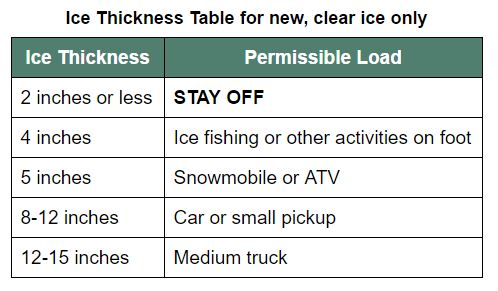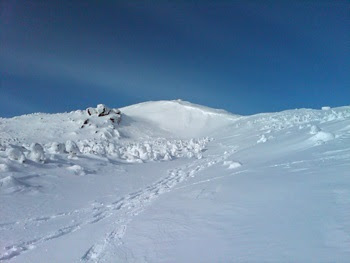Winter Recreational Opportunities Available with Proper Preparation and Precautions
The recent snowstorm is providing good conditions for winter outdoor recreation in the Adirondack backcountry, New York State Department of Environmental Conservation (DEC) Commissioner Basil Seggos announced today. Visitors should be prepared with proper clothing and equipment for snow, ice, and cold to ensure a safe and enjoyable winter experience.
“Now that snow has arrived in the Adirondacks, visitors can take advantage of all the winter recreation opportunities in the park,” Commissioner Seggos said. “However, winter can also present dangerous – even perilous – conditions to the unprepared. Visitors exploring the backcountry should dress for cold weather and use snowshoes and skis to navigate trails where appropriate.”
Snow depths range from two to 18 inches with the deepest snows found in the western and central Adirondacks. Snow depths are thinner in the eastern and southern Adirondacks. Snow depths are much deeper in the higher elevations like the High Peaks and other mountains over 3,000 feet. Additional 3 to 9 inches of snow is forecasted during the next several days with the deeper snows forecasted in the western Adirondacks.

While snow is present throughout the Adirondacks, ice has only recently begun forming on waters and is not safe. Although the ice may have snow on the surface, it is not thick enough to hold the weight of anglers, snowshoers, skiers, skaters or snowmobiles. Ice will remain unsafe until temperatures fall below freezing for a significant continuous period. Avoid ice over running water, near inlets and outlets and near boathouses and docks – especially those with “bubblers” of other ice prevention devices. Learn more about safe practices for travel on ice.
All seasonal access roads are closed to public motor vehicles at this time. Use of these roads by motor vehicles can tear up and rut snowmobile trails and even the roads themselves.
Most gates and designated snowmobile trails in the western and central Adirondacks are or will be open by the weekend including the Moose River Plains and the Seventh Lake Mountain snowmobile trail, and Lake Pleasant. Other trail systems are being checked for blowdown, washouts and other problems, and additional snow before opening. Snowmobilers should check on local trail conditions before heading out.
Skiers and snowshoers using designated snowmobiles trails should keep to side to allow safe passage of snowmobiles. Snowmobiles should slow down when passing skiers and snowshoers.
With snow accumulations recorded at nearly 10″ for the High Peaks Region, the use of snow shoes is required in the High Peaks Wilderness. The use of snowshoes is recommended for those visiting any higher elevation trails or mountains over 3,000′ for personal safety and the safety of other backcountry users. Snowshoes or skis ease travel on snow and prevent “post holing”, which can ruin trails and cause sudden falls resulting in injuries. Ice crampons and traction devices should be carried for use on icy portions of the trails including summits and other exposed areas.
In addition, backcountry visitors should follow these safety guidelines:
- Dress properly with layers of wool and fleece (NOT COTTON!) clothing: a wool or fleece hat, gloves or mittens, wind/rain resistant outer wear, and winter boots.
- Carry a day pack with the following contents: Ice axe, plenty of food and water, extra clothing, map and compass, first-aid kit, flashlight/headlamp, sun glasses, sun-block protection, ensolite pads, stove and extra fuel, and bivy sack or space blankets.
- Carry plenty of food and water. Eat, drink and rest often. Being tired, hungry or dehydrated makes you more susceptible to hypothermia.
- Check weather before entering the woods – if the weather is poor, postpone your trip.
- Be aware of weather conditions at all times – if the weather worsens, head out of the woods.
- Know the terrain and your physical capabilities – it takes more time and energy to travel through snow.
- Never travel alone and always inform someone of your intended route and return time.
Traveling through snow takes more energy and time than hiking the same distance, especially in freshly fallen snow. Plan trips accordingly.
Call the DEC Forest Ranger Emergency Dispatch at 518-891-0235 to report lost or injured people or other backcountry emergencies.
The DEC Adirondack Backcountry Information web page provides current trail condition information and links to current weather, snow cover and other important information to help ensure a safe and enjoyable Adirondack backcountry winter experience.








